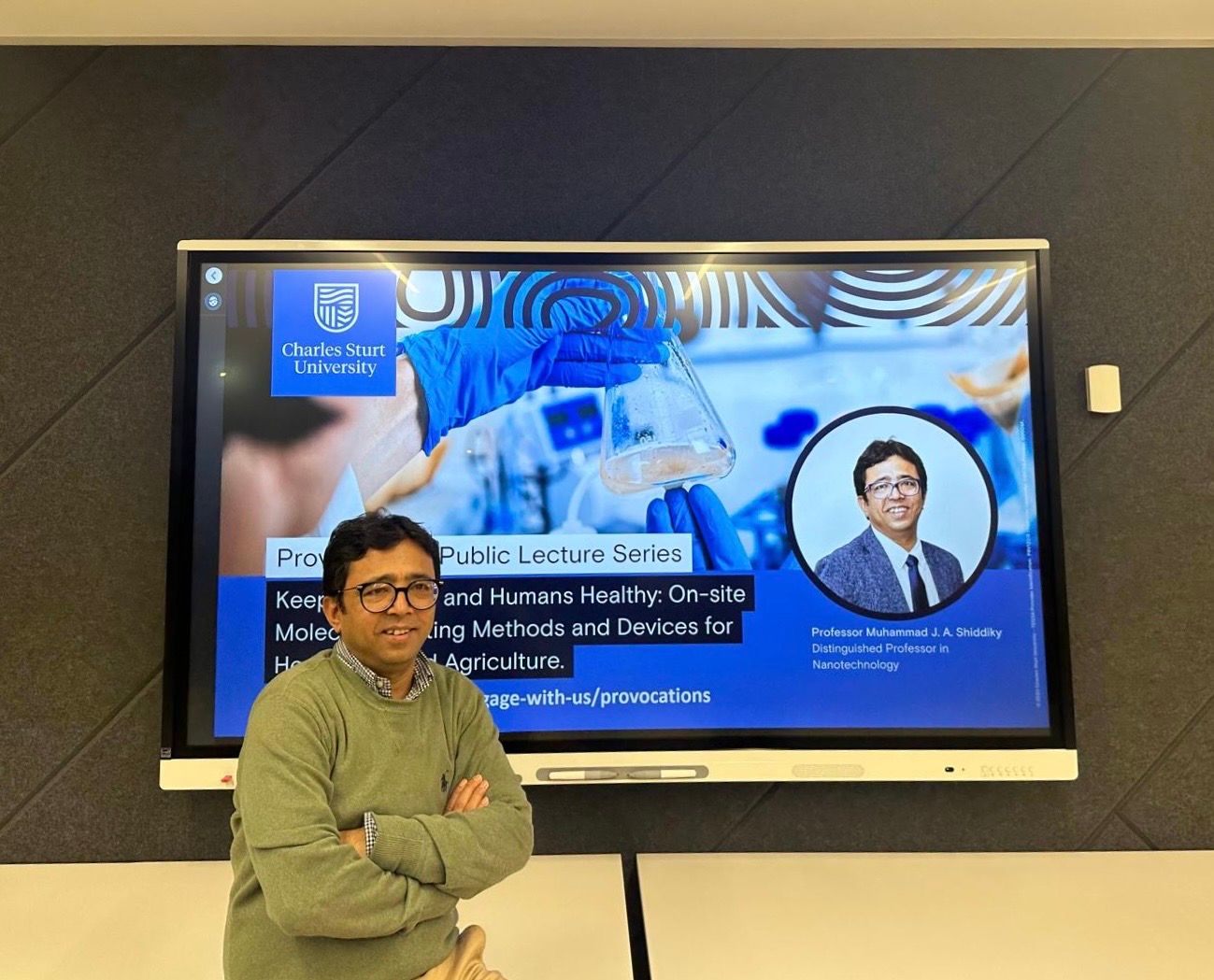

Molecular Diagnostics at the Crossroads of Health and Agriculture By bridging the gap between healthcare and agriculture, molecular diagnostics is paving the way for a healthier future—for people and plants alike.
In a world increasingly shaped by climate change, emerging diseases, and global population growth, the need for smarter, faster solutions across healthcare and agriculture has never been more urgent. Molecular diagnostics—once confined to clinical laboratories—is now moving into the field and onto the farm, offering a transformative approach to disease detection in both humans and crops.
The on-site revolution. Traditional diagnostic tools are centralised, costly, and time-consuming, making them inaccessible in many rural and low-resource settings. In both medicine and agriculture, delayed diagnosis can mean the difference between containment and crisis—whether it’s a cancer that progresses undetected or a crop disease that wipes out a harvest. Thanks to advances in nanotechnology, bioelectronics, and molecular biology, this is changing. Portable, point-of-care (POC) diagnostic devices now allow rapid, accurate testing at the site of need—no specialised lab or expert technician required. These tools are opening new doors for early intervention, especially in communities far from major infrastructure.
Precision health: Predictive and preventive. In healthcare, molecular diagnostics enable a proactive model of care. By detecting genetic biomarkers such as microRNA (miRNA), circulating tumour DNA (ctDNA), or cell-free DNA (cfDNA), diseases can be identified long before symptoms appear. Early detection means more effective treatment and reduced burden on health systems. We saw the power of this during the COVID-19 pandemic, where molecular-based POC tests—like PCR and isothermal amplification methods—helped identify infections in real time. These same platforms now offer potential for tackling other threats, including influenza, tuberculosis, and emerging zoonotic diseases.
Agriculture joins the molecular era. The agricultural sector faces similar threats. Plant diseases like wheat rust and the banana-killing TR4 fungus can devastate food systems if not detected early. Molecular diagnostics now allow farmers to test directly in the field for bacterial, viral, or fungal pathogens using rapid tools such as LAMP and PCR. These tests help guide timely action—whether applying treatment or isolating infected plants—to protect yield and livelihood.
Success stories in the field. Examples abound. The Abbott ID NOW system brought fast COVID-19 testing to airports and clinics globally. In Africa, mobile molecular diagnostics are detecting diseases like malaria and TB in hard-to-reach regions. Meanwhile, citrus growers have used similar tools to manage citrus greening disease, and livestock producers now rely on rapid tests to monitor biosecurity threats.
Rising to climate challenges. As climate change reshapes ecosystems, early-warning systems become even more essential. Shifting weather patterns are expanding the range of disease vectors, increasing risks for both human and plant populations. On-site diagnostics can help farmers adapt to harsher conditions and protect vulnerable communities from outbreaks of diseases like dengue, chikungunya, or Zika.
A converging future. What unites healthcare and agriculture is a shared dependency on early, accurate diagnosis. Molecular diagnostics sits at this intersection—bridging sectors, breaking barriers, and building resilience. As devices become more compact, affordable, and user-friendly, they’re also becoming more equitable—empowering frontline workers and smallholder farmers alike. The next generation of molecular diagnostics promises to transform the way we safeguard health and food systems. With continued innovation, these tools will help us detect and respond to threats more swiftly, sustainably, and globally. By embedding diagnostics where they are needed most, we are not just treating diseases—we are creating a future that is healthier, more secure, and better prepared for the challenges ahead.
